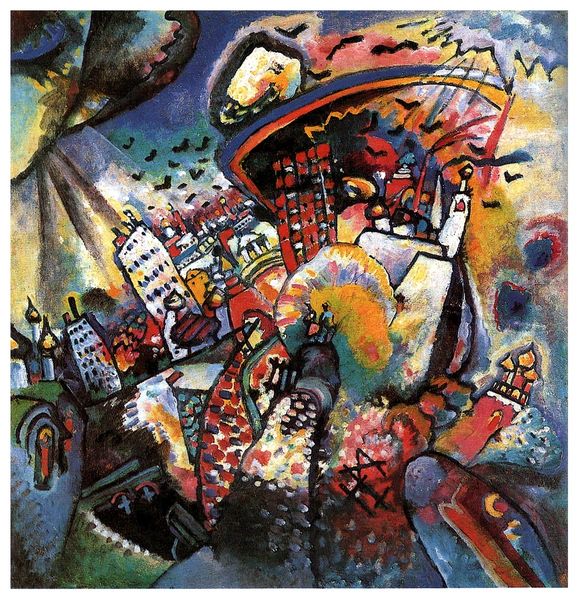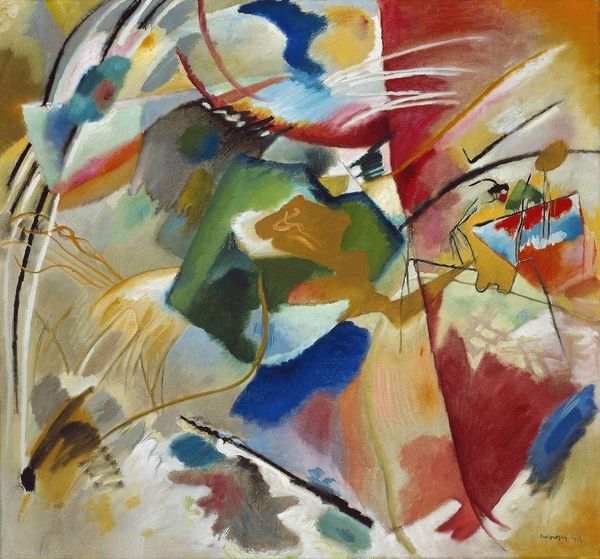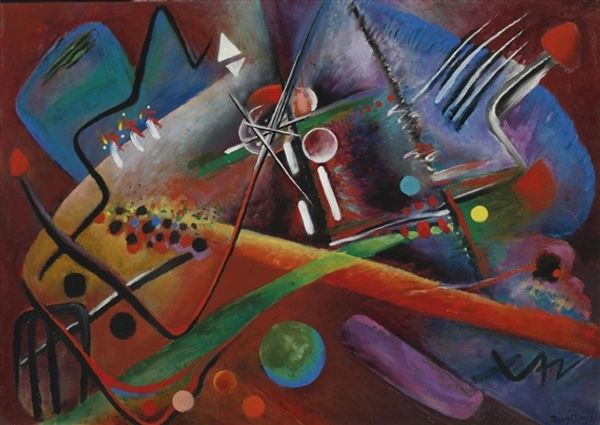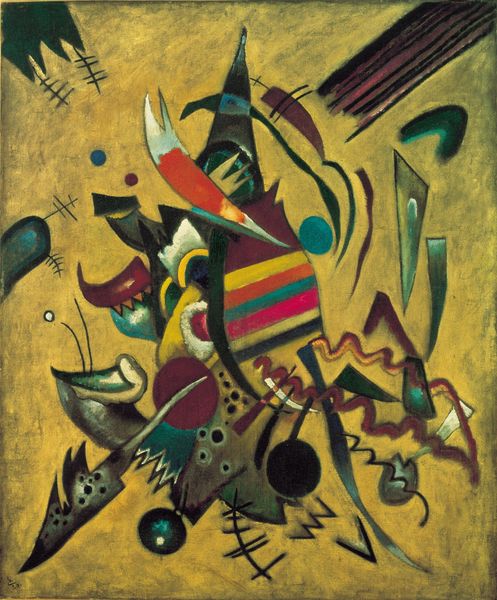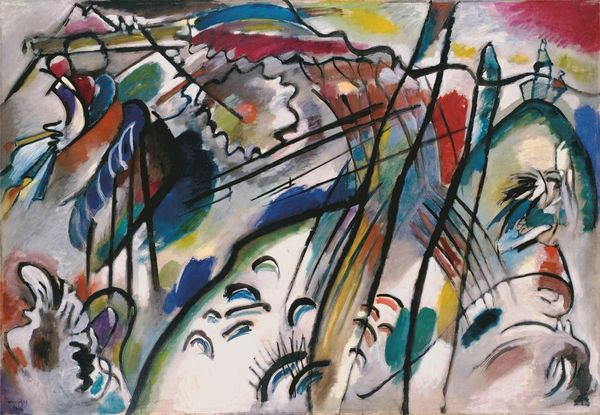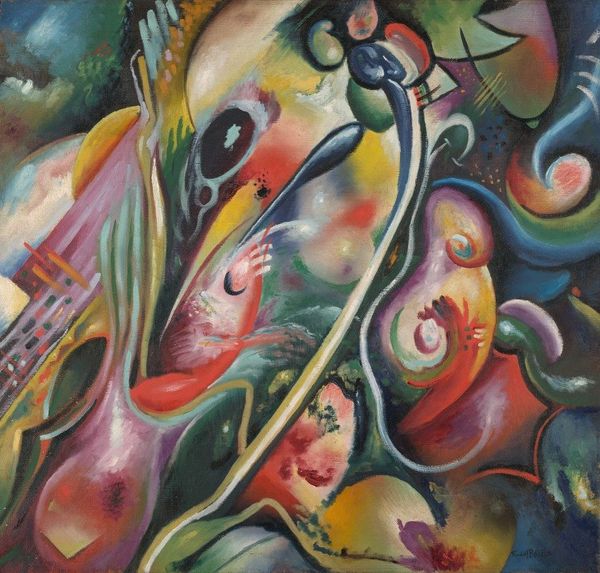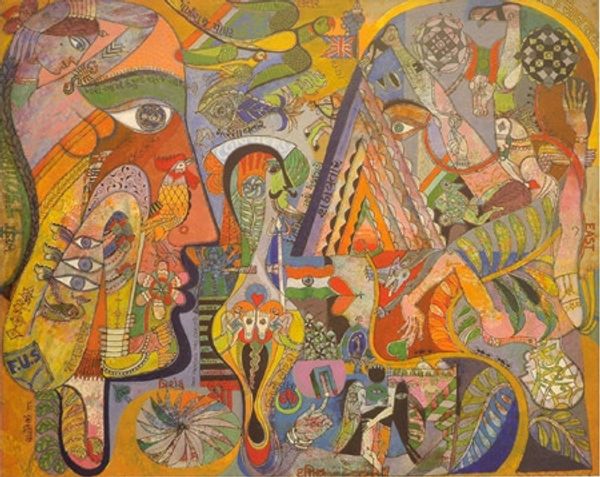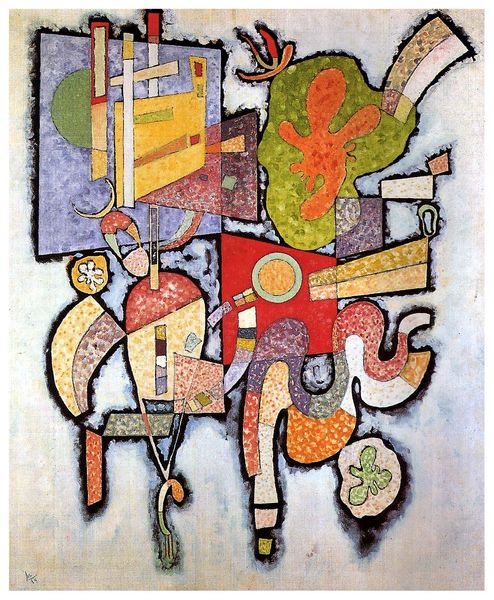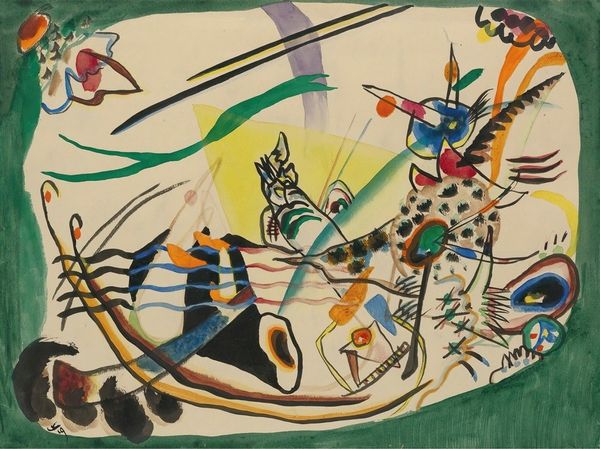
Dimensions: 71.5 x 71.5 cm
Copyright: Public domain
Curator: Kandinsky's "Red Oval," created in 1920 and housed here at the Guggenheim, presents a compelling case study of abstract expressionism in its early stages. Editor: Immediately, it strikes me as a visual representation of chaotic energy attempting to find equilibrium. There’s so much happening, a riot of geometric forms, but the oval provides a grounding. Curator: Indeed, that tension is key. This painting reflects the artist’s evolving ideas concerning abstraction, shifting away from representational imagery. We can view this as Kandinsky's visual response to societal upheaval after World War One. Editor: So, you see that reflected in the jarring juxtapositions and fractured shapes. It’s interesting how the use of line conveys a sense of frenetic motion, the angular shards are so distinct in juxtaposition to the oval. What might have spurred such abstraction during that era? Curator: The war deeply impacted artists who felt traditional artistic forms were insufficient. They saw it as obsolete to reflect or address modern experience. Kandinsky and his contemporaries, like many across Europe, searched for a new language, one that transcended national boundaries and resonated with a universal, spiritual truth. Editor: The composition feels heavily laden with cultural baggage; how Kandinsky tries to overcome national limitations, that still impacts our views of abstraction today. Thinking about it politically, his rejection of realistic, representative forms becomes a potent statement of dissent. Curator: Absolutely, he believed abstract art could tap into viewers' emotions and, therefore, spark transformation. Editor: I do like that despite the intellectual framing, and considering its radical break from the artistic norms, the colors evoke a visceral, immediate reaction. What lingers with me most is not any definitive explanation, but its vibrant embodiment of profound societal and inner turmoil. Curator: "Red Oval" truly serves as a remarkable reflection of the artist’s pursuit of visual music, an attempt to move beyond the material world.
Comments
No comments
Be the first to comment and join the conversation on the ultimate creative platform.

